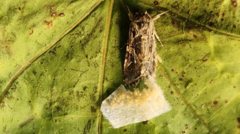In a remarkable discovery from Tel Aviv University, it has been established that animals can listen and react to the sounds emitted by plants in distress. This groundbreaking research suggests that an intricate, invisible communication network exists between plants and various animal species. In the study, researchers observed that female moths avoided laying their eggs on tomato plants that emitted sounds interpreted as stress indicators, suggesting the plants were unhealthy.
This research builds on previous findings from two years earlier when scientists first documented that plants make sounds during periods of distress or ill health. The pitches of these sounds are inaudible to humans but can be heard by many insects, bats, and certain mammals. "This marks the first time an animal has been observed responding to auditory signals from a plant," stated Prof. Yossi Yovel, one of the lead researchers. He posited that this discovery opens the door to the idea that various animals might make essential survival decisions, such as whether to pollinate or take refuge among plants based on these sounds.
Through carefully controlled experiments, the team ensured that the decision-making by the moths was influenced by sound rather than the visual characteristics of the plants. Future studies aim to explore the different types of sounds generated by various plant species and whether these sounds affect the behavior of other animals seeking shelter or food from these plants.
Prof. Lilach Hadany, also affiliated with the study, raised the exciting prospect of plants conveying information to one another through sound, potentially impacting behaviors like water conservation in drought situations. "If a plant experiences stress, other plants remain the most affected and could respond in several ways," she remarked.
Researchers emphasized that plants are not sentient beings. The sounds they produce are a result of changes in their immediate environment. The implications, however, are profound, as they suggest that the ability to make and interpret these sounds might have co-evolved in both plants and animals for mutual benefit. "Evolution could favor plants that produce more sounds if these aid in their survival, while animal hearing may simultaneously evolve to process this information," said Prof. Hadany.
This research highlights a vast, uncharted domain of interaction and communication between the animal and plant kingdoms, revealing a dynamic world ripe for further exploration. The study focuses on the behavior of female moths, which typically seek out healthy tomato plants for egg-laying, allowing their hatching larvae to thrive. In this experiment, the moths' behavior aligned with the audio cues of plant health, ultimately resulting in their decision to refrain from laying eggs on distressed plants. The study’s findings have been published in the journal eLife.






















